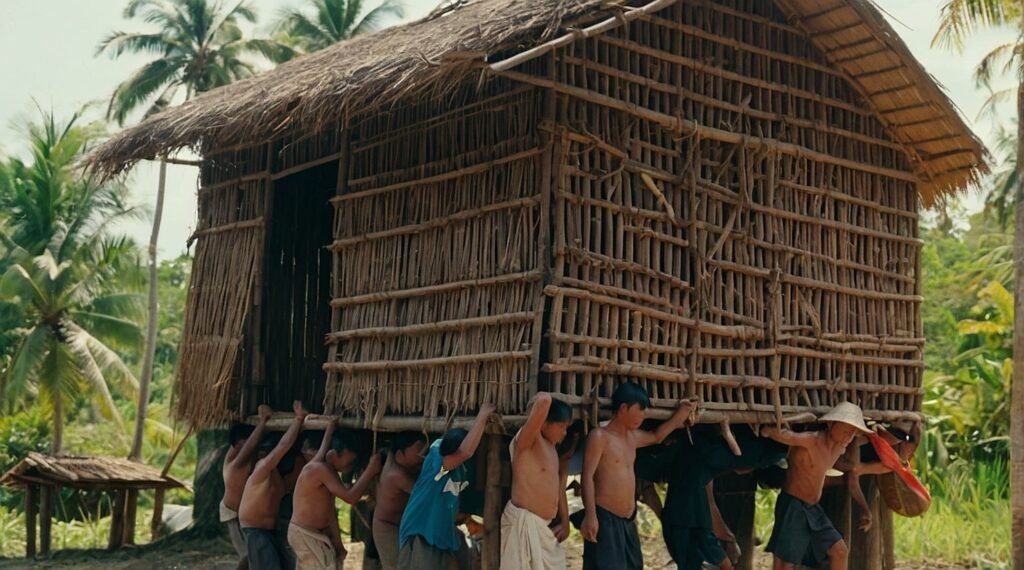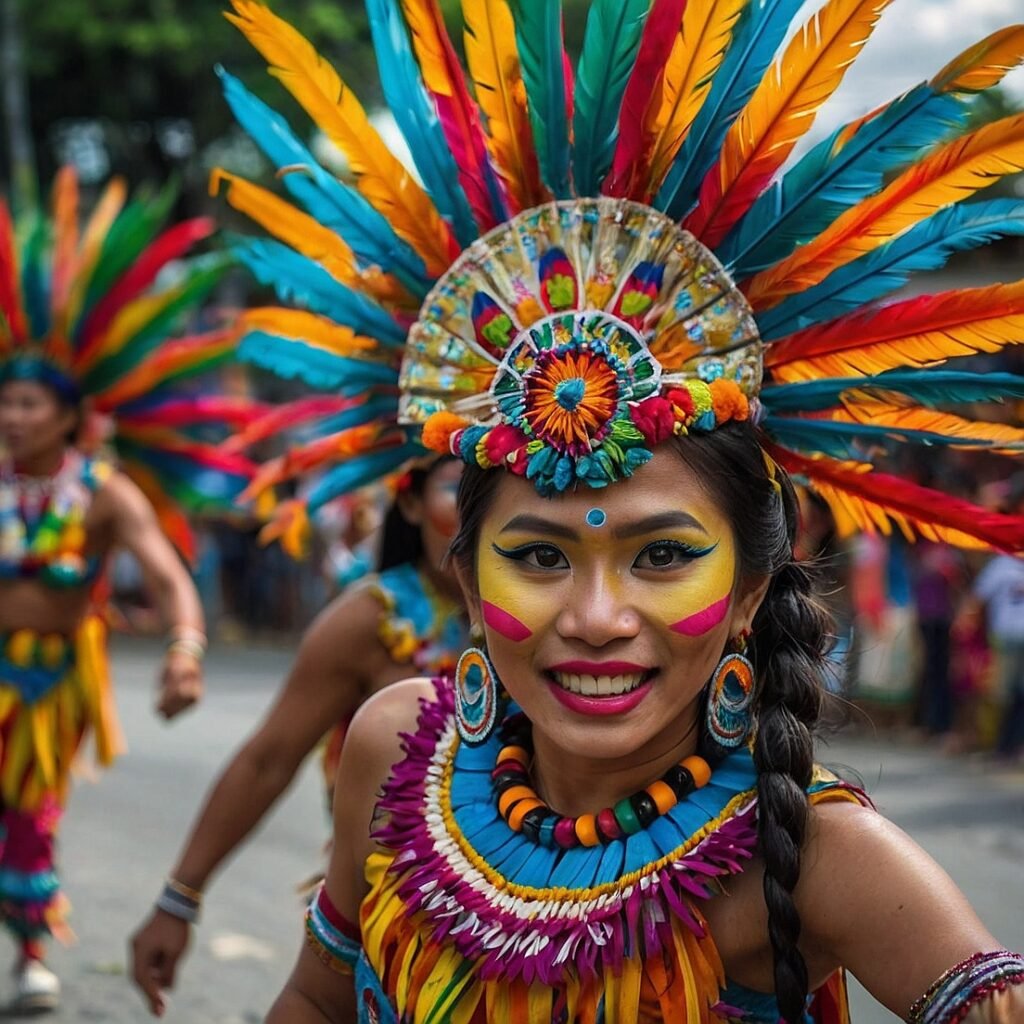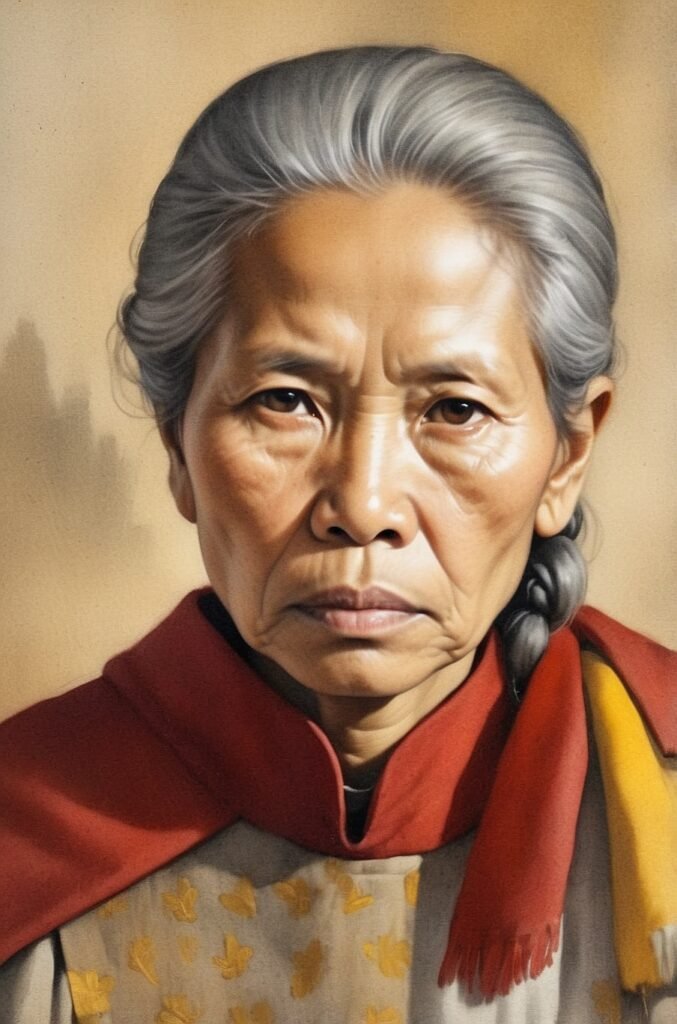Have you ever wondered what makes Filipino culture so unique and heartwarming? Well, let me introduce you to a concept that’s at the very core of Filipino society – the Bayanihan spirit. It’s more than just a word; it’s a way of life that has shaped the Filipino people for generations. Bayanihan, pronounced “buy-uh-nee-hun,” is a Tagalog term that embodies the idea of communal unity, working together towards a common goal, and helping one another without expecting anything in return. It’s a beautiful reflection of the Filipino value of community, and today, we’re going to dive deep into this fascinating cultural phenomenon.
As we explore the Bayanihan spirit, we’ll uncover its historical roots, examine how it manifests in modern Filipino society, and discuss why it continues to be relevant in today’s fast-paced world. So, grab a cup of coffee (or better yet, some Filipino hot chocolate), and let’s embark on this journey to understand one of the most cherished values in Philippine culture.
The Origins of Bayanihan: A Journey Through Time
From ancient traditions to modern-day practice
To truly appreciate the Bayanihan spirit, we need to take a step back in time. The concept of Bayanihan has been deeply ingrained in Filipino culture for centuries, long before the Philippines was even a unified nation. In fact, the word itself gives us a clue about its origins. “Bayan” in Tagalog means nation, community, or town, while “bayani” means hero. When combined, Bayanihan essentially translates to “being a hero to one’s community.”
But where did this idea come from? Well, it’s believed that the Bayanihan spirit originated from the pre-colonial era when Filipino communities were primarily agricultural. Picture this: a small village nestled among lush green fields. A family needs to move their bahay kubo (traditional Filipino house made of bamboo and nipa palm) to a new location. Now, these houses weren’t exactly lightweight, but instead of struggling alone, the entire community would come together to literally carry the house on their shoulders to its new spot. Can you imagine the sight? Dozens of people, working in unison, moving an entire house! This practice not only made the arduous task easier but also strengthened community bonds.
As time passed, the literal act of moving houses became less common, but the spirit of Bayanihan remained. It evolved to encompass various forms of community cooperation, from helping during natural disasters to supporting neighbors in times of need. The Spanish colonial period and later the American occupation brought changes to Filipino society, but the Bayanihan spirit persevered, adapting to new challenges and circumstances.
Bayanihan in Action: How It Shapes Filipino Society Today
Everyday examples of community spirit
Now that we’ve explored the historical roots of Bayanihan, let’s fast forward to the present day. You might be wondering, “How does this ancient concept fit into modern Filipino society?” Well, let me tell you, the Bayanihan spirit is alive and well, manifesting itself in numerous ways across the Philippines.
One of the most visible examples of Bayanihan in action is during times of natural disasters. The Philippines, unfortunately, is no stranger to typhoons, earthquakes, and volcanic eruptions. But in the face of these challenges, the Filipino people consistently demonstrate their resilience and unity. When a typhoon strikes, you’ll see neighbors helping each other secure their homes, sharing food and supplies, and even offering shelter to those in need. Relief efforts often begin at the grassroots level, with local communities mobilizing before official aid arrives. It’s a powerful reminder of how deeply ingrained the Bayanihan spirit is in Filipino culture.
But Bayanihan isn’t just reserved for times of crisis. It’s woven into the fabric of everyday life in the Philippines. Take, for instance, the concept of “utang na loob” (debt of gratitude). This cultural value encourages Filipinos to remember and repay kindnesses done to them, creating a cycle of mutual support within communities. You might see this in action when neighbors take turns watching each other’s children, or when friends pool resources to help a community member in financial need.
Community initiatives and volunteerism
The Bayanihan spirit also drives numerous community initiatives and volunteer efforts across the country. From coastal clean-up drives to literacy programs in underserved areas, Filipinos often come together to address local issues and improve their communities. These grassroots efforts are a testament to the power of collective action and the enduring relevance of Bayanihan in modern society.
One particularly heartwarming example of Bayanihan in action is the “Bangon Marawi” (Rise Marawi) movement. After the siege of Marawi City in 2017, Filipinos from all walks of life united to help rebuild the war-torn city. People donated money, supplies, and time to support the affected communities, showcasing how the Bayanihan spirit can transcend regional and religious boundaries.
The Psychology Behind Bayanihan: Why It Works
The power of social cohesion
Now, you might be wondering what makes the Bayanihan spirit so effective. Well, it turns out there’s some pretty solid psychology behind it. At its core, Bayanihan taps into our innate human need for social connection and belonging. When people work together towards a common goal, it creates a sense of unity and shared purpose that can be incredibly powerful.
Studies have shown that social cohesion – the willingness of members of a society to cooperate with each other – is a key factor in community resilience and well-being. The Bayanihan spirit fosters this cohesion by encouraging people to look out for one another and contribute to the greater good. This sense of interconnectedness not only helps communities overcome challenges but also contributes to individual happiness and life satisfaction.
Moreover, the act of helping others has been proven to have numerous psychological benefits. It can reduce stress, increase feelings of self-worth, and even improve physical health. So, in a way, the Bayanihan spirit creates a win-win situation: the community benefits from collective action, and individuals experience personal growth and fulfillment through their contributions.
Cultural values and social norms
Another reason why Bayanihan works so well in Filipino society is that it’s deeply intertwined with other cultural values and social norms. For instance, the Filipino concept of “kapwa” (shared identity) emphasizes the interconnectedness of all people. This worldview naturally aligns with the cooperative nature of Bayanihan, making it easier for Filipinos to engage in communal efforts.
Additionally, the importance placed on family and extended kinship networks in Filipino culture creates a fertile ground for Bayanihan to flourish. The sense of responsibility towards one’s family often extends to the broader community, fostering a spirit of mutual aid and support.
Bayanihan in the Digital Age: Adapting to New Realities
Online communities and virtual Bayanihan
As we navigate the 21st century, you might be wondering if the Bayanihan spirit can survive in our increasingly digital world. Well, I’m happy to report that not only is it surviving, but it’s also thriving and evolving in fascinating ways. The internet and social media have opened up new avenues for Filipinos to practice Bayanihan, extending its reach beyond physical communities.
During the COVID-19 pandemic, we saw numerous examples of “virtual Bayanihan” in action. Online communities sprang up to coordinate relief efforts, share information, and provide emotional support during lockdowns. Crowdfunding platforms became digital spaces for Bayanihan, allowing Filipinos to pool resources and support causes from anywhere in the world. Social media hashtags like #Bayanihan and #OneBaiyanihan trended as people shared stories of community spirit and inspired others to take action.
One particularly inspiring example was the emergence of community pantries across the Philippines. These grassroots initiatives, often organized through social media, set up food donation and distribution points where people could give what they could and take what they needed. The movement spread rapidly, showcasing how the Bayanihan spirit could adapt to meet new challenges in the digital age.
Challenges and opportunities in a globalized world
Of course, the digital age also brings its own set of challenges to the practice of Bayanihan. The fast-paced nature of modern life, increased individualism, and the weakening of traditional community structures can sometimes make it harder for people to engage in communal efforts. Additionally, the global Filipino diaspora means that many Filipinos are physically separated from their home communities, potentially weakening traditional support networks.
However, these challenges also present opportunities for the Bayanihan spirit to evolve and expand. Technology allows overseas Filipinos to remain connected to their communities back home and contribute to Bayanihan efforts from afar. Global Filipino networks can mobilize resources and support for causes in the Philippines, creating a kind of “long-distance Bayanihan.”
Moreover, the principles of Bayanihan are finding resonance beyond Filipino communities. As the world grapples with global challenges like climate change and inequality, the cooperative ethos of Bayanihan offers a valuable model for collective action and community resilience.
Lessons from Bayanihan: What the World Can Learn
A model for community resilience
As we’ve explored the various facets of Bayanihan, it’s becoming clear that this Filipino value has much to offer the world. In an era where many societies are grappling with issues of social fragmentation and individualism, the Bayanihan spirit provides a powerful model for building strong, resilient communities.
One of the key lessons we can draw from Bayanihan is the importance of social capital – the networks of relationships that enable a society to function effectively. By fostering a culture of mutual aid and cooperation, Bayanihan helps build this social capital, creating communities that are better equipped to face challenges and recover from setbacks. This is particularly relevant in today’s world, where we’re facing increasingly complex global issues that require collective action.
Another valuable lesson from Bayanihan is the power of grassroots initiatives. The Bayanihan spirit shows us that community-led efforts can often be more effective and responsive than top-down approaches. By empowering local communities and tapping into their knowledge and resources, we can create more sustainable and context-appropriate solutions to social issues.
Fostering a global spirit of cooperation
But perhaps the most important lesson we can take from Bayanihan is the fundamental importance of empathy and compassion in building strong societies. The Bayanihan spirit reminds us that we’re all interconnected, and that by helping others, we ultimately help ourselves. This perspective could be invaluable in addressing global challenges like climate change, where collective action is crucial.
Imagine if we could foster a global “Bayanihan spirit” – a worldwide culture of cooperation and mutual support. How might that change our approach to international aid, conflict resolution, or environmental protection? While it might sound idealistic, the principles of Bayanihan offer a roadmap for building more cooperative and resilient global communities.
Nurturing Bayanihan: Keeping the Spirit Alive
Passing on values to future generations
As we’ve seen, the Bayanihan spirit is a precious part of Filipino cultural heritage. But like any cultural value, it needs to be actively nurtured and passed on to future generations. So, how can we ensure that the Bayanihan spirit continues to thrive in the face of rapid social change?
One key aspect is education. By incorporating the principles of Bayanihan into school curricula and community programs, we can help young people understand and appreciate this important cultural value. This doesn’t just mean teaching about Bayanihan in history or social studies classes, but also creating opportunities for students to experience Bayanihan in action through community service projects and volunteer activities.
Families also play a crucial role in transmitting the Bayanihan spirit. By modeling cooperative behavior and involving children in community efforts, parents can help instill these values from an early age. Simple acts like helping a neighbor or participating in local clean-up drives can be powerful lessons in the importance of community and mutual support.
Adapting Bayanihan for the future
At the same time, it’s important to recognize that the practice of Bayanihan will need to evolve to remain relevant in a changing world. This might mean finding new ways to apply Bayanihan principles in urban settings, where traditional community structures may be weaker. It could also involve leveraging technology to facilitate community cooperation and support networks.
One exciting possibility is the integration of Bayanihan principles into emerging fields like social entrepreneurship and sustainable development. By combining the cooperative ethos of Bayanihan with innovative business models and technologies, we could create powerful new approaches to addressing social and environmental challenges.
The Enduring Power of Bayanihan
As we wrap up our exploration of the Bayanihan spirit, I hope you’ve gained a deeper appreciation for this beautiful aspect of Filipino culture. From its historical roots in rural communities to its modern manifestations in both physical and digital spaces, Bayanihan continues to be a powerful force shaping Filipino society.
The Bayanihan spirit reminds us of the incredible things we can achieve when we come together as a community. It’s a testament to the resilience, compassion, and creativity of the Filipino people, and a valuable model for building strong, supportive communities in an increasingly complex world.
As we face global challenges that require unprecedented levels of cooperation and collective action, the principles of Bayanihan offer valuable lessons for all of us, regardless of our cultural background. By embracing the spirit of Bayanihan – the idea that we are all interconnected and that by helping others, we ultimately help ourselves – we can work towards building a more compassionate, resilient, and united world.
So, the next time you hear the word “Bayanihan,” remember that it’s more than just a quaint cultural tradition. It’s a living, breathing ethos that continues to inspire and empower communities in the Philippines and beyond. And who knows? Maybe by embracing a little bit of the Bayanihan spirit in our own lives, we can all contribute to creating stronger, more supportive communities wherever we are in the world.
Disclaimer: This blog post aims to provide an overview of the Bayanihan spirit based on cultural knowledge and research. While every effort has been made to ensure accuracy, cultural practices and interpretations may vary. We encourage readers to share their own experiences and understandings of Bayanihan. If you notice any inaccuracies, please report them so we can promptly make corrections.




